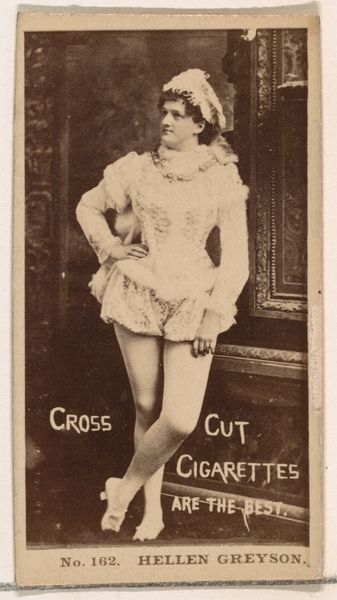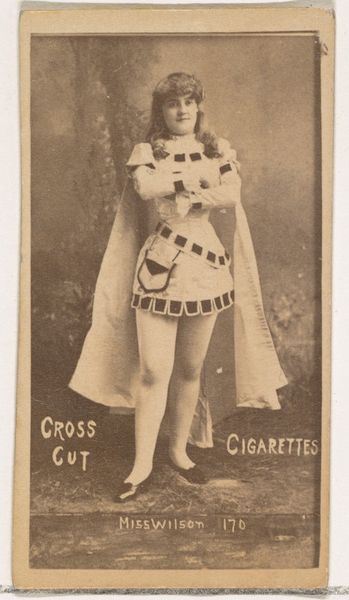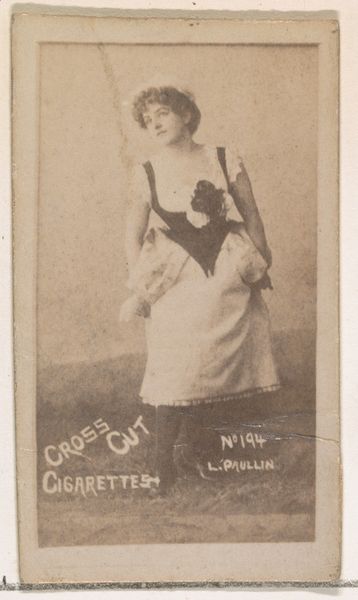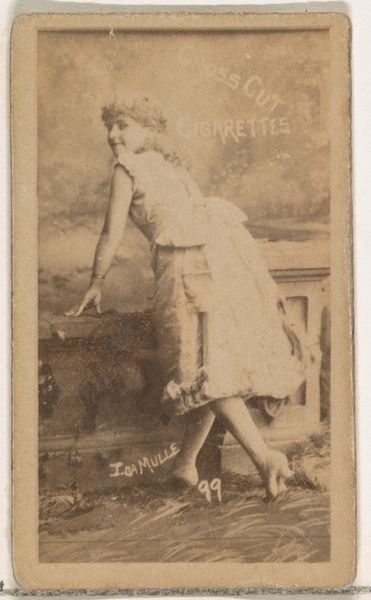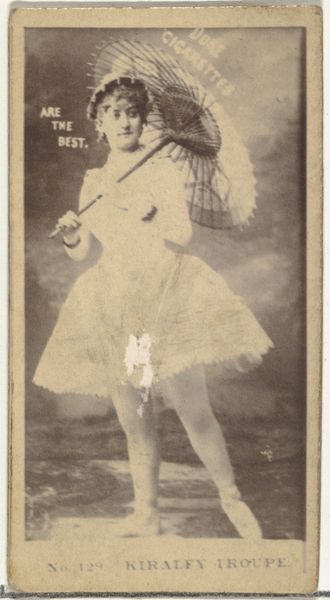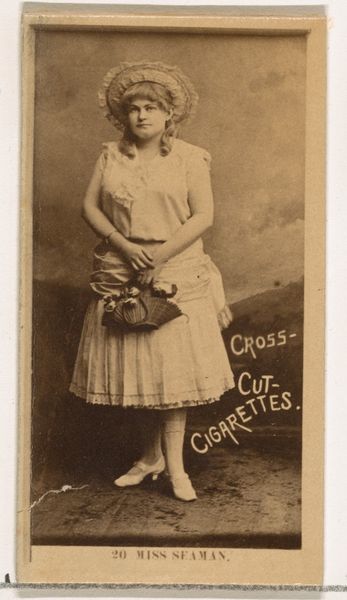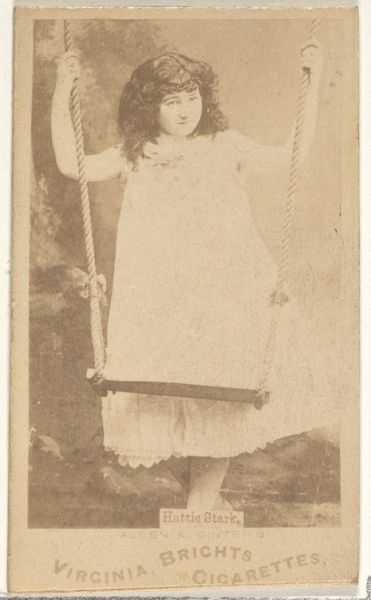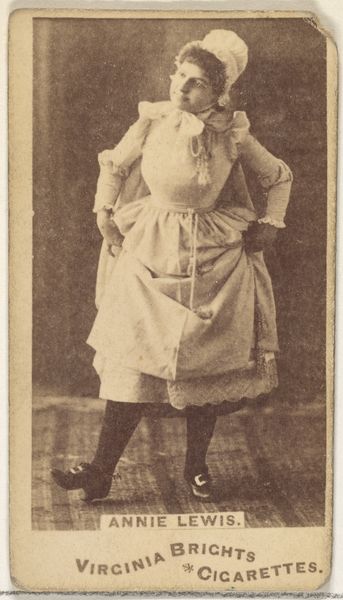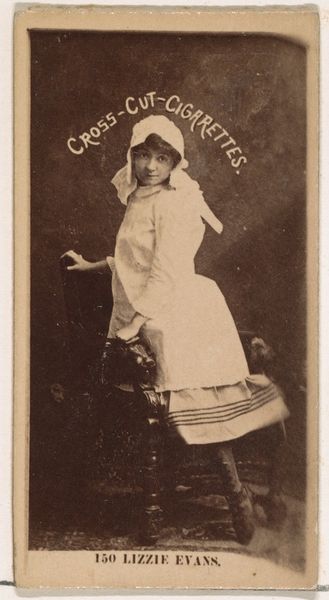
Card Number 65, Ida Mulle, from the Actors and Actresses series (N145-2) issued by Duke Sons & Co. to promote Cross Cut Cigarettes 1880s
0:00
0:00
drawing, print
#
portrait
#
photo of handprinted image
#
drawing
#
aged paper
#
toned paper
#
photo restoration
#
ink paper printed
# print
#
charcoal drawing
#
charcoal art
#
19th century
#
men
#
watercolour illustration
#
watercolor
Dimensions: Sheet: 2 5/8 × 1 7/16 in. (6.6 × 3.7 cm)
Copyright: Public Domain
Curator: Immediately, the monochrome and the dimensions – roughly playing-card size, wouldn't you agree? – evoke the era of this photographic print. It projects an unusual androgyny that goes against traditional gender roles. Editor: Yes, the tonal range speaks of vintage photographic printing. I immediately want to consider the materials: aged paper stock, the precise method of ink transfer, the very nature of ephemera made to be distributed widely… let me tell you, I bet the mass production methods would be enlightening. Curator: Let’s situate it. This is "Card Number 65, Ida Mulle, from the Actors and Actresses series (N145-2) issued by Duke Sons & Co. to promote Cross Cut Cigarettes" from the 1880s. Think about the context! These cards circulated widely, and shaped perceptions of femininity during a transformative time for women in entertainment. Editor: Precisely. So this was churned out, presumably, using photolithography, judging from the dot patterns in the shading. That implies an industrialized approach to reproduction; so different from a singular artwork in an earlier moment! Each stage would have had laborers, factory spaces, marketing, distribution channels… the sheer logistics! Curator: Yes, and that act of circulating an image of Ida Mulle also placed her within a nexus of power—both objectified as an image for consumption, and elevated by virtue of fame. Tobacco companies utilized burgeoning starlets to build audiences. It's the perfect example of the female figure used as a vehicle. Editor: Let’s remember the audience of these cards—smokers! Part of the consumption. The fleeting nature of its use is indicative of the material reality. Did people collect these? Exchange them? Or were they destined for wastebins after the cigarettes were gone? The lifespan speaks to the social context of materials and to what it signified to own it. Curator: Exactly. It speaks volumes, this seemingly minor thing, about the dynamics of celebrity, marketing, and gender roles. Thinking about that moment opens pathways to dissect power in representation even today. Editor: And studying the materials and manufacturing anchors us. The artwork isn't an untouchable product of individual inspiration, but evidence of broader cultural mechanisms at play, of networks of making and exchanging goods. Curator: I come away reflecting how media creates the very terms for how identity performs. Editor: I keep thinking of how material culture embodies history – one card a starting point to understanding production.
Comments
No comments
Be the first to comment and join the conversation on the ultimate creative platform.
